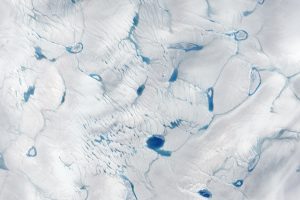
Greenland’s glaciers may be melting 100 times faster than previously estimated, according to a new ice melt model that corrects an old assumption that was based on the melt rate of glaciers a world away in Antarctica.
Unfortunately, this contrast in geography makes a huge difference in how Greenland’s ice melts, with the shape of the fjords bringing warm water to the underside of the glaciers that melt the ice from below. The new modeling shows that the rate of melt is 100 times faster than what the previous, Antarctica-based models predicted.
“For years, people took the melt rate model for Antarctic floating glaciers and applied it to Greenland’s vertical glacier fronts,” explains lead author Kirstin Schulz, a research associate in the Oden Institute for Computational Engineering and Sciences at University of Texas at Austin. “But there is more and more evidence that the traditional approach produces too low melt rates at Greenland’s vertical glacier fronts.”
More recent scientific expeditions to west Greenland have made use of submersible robotic drones to get closer to the glacier faces to gather data; a recent Rutgers University-led survey used such drones at the Kangerlussuup Sermia glacier, and an upcoming University of Texas expedition will study Kangilliup Sermia, Umiammakku Sermiat and Kangerlussuup Sermia.
Subscribers, to watch the subscriber version of the video, first log in then click on Dreamland Subscriber-Only Video Podcast link.
The inertia of climate change is here and will carry on regardless of our future efforts. I’m planting trees on my property that live to the south and west of my location with the gamble they will fare better in the future. I will baby them for two years with the hope they will survive in a predicted drier and hotter climate.
This is terrible. Mother Gaia needs healed and fast or we are going to start coming to a point of no return. How do you help?! If you have any ideas let me know! Everyone should be doing their part or what they can… If our government was honest about what is living in our skies and oceans and has been, maybe they could help! At this point we need an intervention…
thank you again for another great article Whitley!